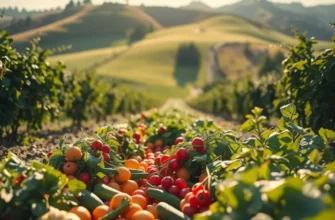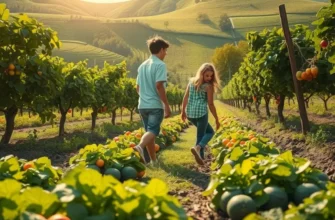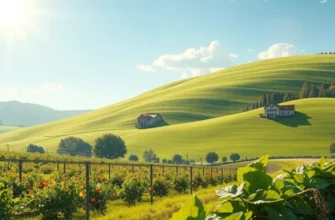Scallops are a delicacy that can elevate your dining experience, yet many home cooks shy away from preparing them. With the right techniques, you can achieve perfectly seared scallops with a golden crust and tender inside, impressing family and friends alike. Whether you’re a novice or looking to refine your skills, this guide will empower you with clear methods to sear scallops like a pro.
Selecting the Right Scallops

Choosing fresh, high-quality scallops is the first step in achieving the perfect sear. With several varieties available, it’s essential to understand how to select the best type for your culinary needs.
Types of Scallops
Scallops are generally categorized into two main types: bay scallops and sea scallops. Bay scallops are smaller, sweeter, and typically found in bays and estuaries. They are ideal for gentle sautés or inclusion in a light pasta dish. Sea scallops are larger, more robust, and often found in deeper ocean waters. Their size and meaty texture make them perfect for searing.
Freshness Indicators
When selecting scallops, freshness is paramount. Fresh scallops should present as a creamy white or slightly pinkish color with a firm but moist texture. Avoid any scallops that appear dry, discolored, or have a fishy smell. A mild oceanic aroma is a good indicator of freshness. If purchasing packaged scallops, check the sell-by date and ensure the packaging is properly sealed.
Wet vs. Dry Scallops
Understanding the difference between wet and dry scallops is crucial. Wet scallops are treated with a phosphate solution to retain moisture, often yielding a bland taste and excessive water during cooking. This makes achieving the desired golden crust difficult. Dry scallops, conversely, are untreated and naturally creamy and sweet. They are the superior choice for searing, as they will caramelize beautifully, enhancing their natural flavors. Always opt for dry scallops whenever possible.
Preparation Before Cooking
Before cooking, rinse scallops lightly under cold water and pat them dry with paper towels. This extra step removes any surface moisture that could hinder a good sear. Inspect each scallop for a small side muscle, a tough piece that should be pulled off gently. If you intend to cook them soon after purchase, store the scallops in the coldest part of the refrigerator, ideally on a bed of ice.
Reading labels carefully and knowing these distinctions can elevate your dish significantly. For more tips on speeding up seafood preparation, consider visiting these speedy seafood prep techniques, which offer insights into enhancing your culinary practice while minimizing prep time. Combining proper selection with efficient preparation methods ensures that each bite is as pristine as it is delightful, paving the way for the culinary excellence of perfectly seared scallops.
Techniques for Perfectly Searing Scallops

Mastering the art of searing scallops begins with preparing your cooking surface. Choose a heavy-duty frying pan or skillet, preferably stainless steel or cast iron, which ensures even heat distribution. Preheat the pan over medium-high heat until it is hot—a crucial step to achieving that coveted crispy crust.
When it comes to selecting oil, opt for one with a high smoke point, such as grapeseed or canola oil. This choice allows for a higher cooking temperature, necessary for a proper sear, without risking the oil breaking down and affecting flavor. Add just enough oil to coat the bottom of the pan, ensuring your scallops will not stick while searing.
Controlling temperature is essential. Scallops should hit the pan with a sizzle. If they do not sizzle upon contact, your pan is not hot enough, and you run the risk of overcooking them before they develop a crust. Conversely, if the oil begins smoking, the heat is too high, and you risk burning the exterior without cooking the interior to perfection.
Place the scallops gently into the pan, ensuring they have enough space between them to facilitate proper cooking and browning. Overcrowding leads to steaming rather than searing. Let them cook undisturbed for 2-3 minutes on the first side. As they sear, a golden crust will form. If they resist when you try to flip them, they are not ready; let them cook a little longer. Once flipped, an additional 1-2 minutes will suffice for the second side.
To amplify the flavors of your dish, consider complementary ingredients and sauces. A squeeze of fresh lemon or a garnish of chopped herbs like parsley or dill can infuse brightness. Alternatively, create a quick pan sauce by deglazing with white wine or broth, adding a pat of butter, and seasoning with salt and pepper for a rich finish. If you’re exploring how to enhance flavors without additional salt, visit these flavorful suggestions.
Avoid common pitfalls by ensuring your scallops are thoroughly pat-dried before cooking, as excess moisture hinders browning. Additionally, resist the temptation to move them in the pan before a crust forms—patience here is truly a virtue. Finally, use salt sparingly before cooking to draw out moisture without compromising the interior tenderness.
By mastering these searing techniques, you’ll consistently serve scallops adorned with a crisp, golden crust and a tender, juicy inside, impressing even the most discerning of palates.
Final words
Seared scallops are not just for fine dining; with the right knowledge and practice, they can be a delightful part of your home cooking repertoire. By selecting high-quality scallops and employing proper searing techniques, you unlock the potential of this exquisite seafood dish. Remember, practice makes perfect, so don’t hesitate to experiment with different seasoning, oils, and side dishes. Your culinary journey with scallops can lead to delicious meals that impress any guest, making every occasion special.







